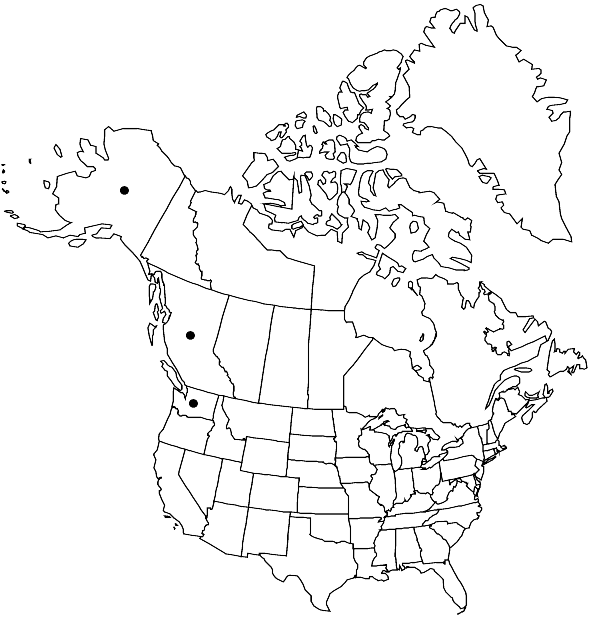Difference between revisions of "Bucklandiella brevipes"
in R. Ochyra et al., Cens. Cat. Polish Mosses, 144. 2003,.
imported>Volume Importer |
imported>Volume Importer |
||
| Line 1: | Line 1: | ||
{{Treatment/ID | {{Treatment/ID | ||
|accepted_name=Bucklandiella brevipes | |accepted_name=Bucklandiella brevipes | ||
| − | |accepted_authority=(Kindberg) Bednarek-Ochyra & Ochyra | + | |accepted_authority=(Kindberg) Bednarek-Ochyra & Ochyra |
|publications={{Treatment/Publication | |publications={{Treatment/Publication | ||
|title=in R. Ochyra et al., Cens. Cat. Polish Mosses, | |title=in R. Ochyra et al., Cens. Cat. Polish Mosses, | ||
| Line 36: | Line 36: | ||
-->{{#Taxon: | -->{{#Taxon: | ||
name=Bucklandiella brevipes | name=Bucklandiella brevipes | ||
| − | |authority=(Kindberg) Bednarek-Ochyra & Ochyra | + | |authority=(Kindberg) Bednarek-Ochyra & Ochyra |
|rank=species | |rank=species | ||
|parent rank=section | |parent rank=section | ||
| Line 49: | Line 49: | ||
|publication year= | |publication year= | ||
|special status= | |special status= | ||
| − | |source xml=https:// | + | |source xml=https://bitbucket.org/aafc-mbb/fna-data-curation/src/2e0870ddd59836b60bcf96646a41e87ea5a5943a/coarse_grained_fna_xml/V27/V27_385.xml |
|subfamily=Grimmiaceae subfam. Racomitrioideae | |subfamily=Grimmiaceae subfam. Racomitrioideae | ||
|genus=Bucklandiella | |genus=Bucklandiella | ||
Latest revision as of 21:26, 5 November 2020
Plants large and coarse, rigid, in loose tufts or mats, olive green and often grayish distally, brownish proximally. Stems 3–5(–7) cm, curved-ascending to erect, sparsely irregularly to subpinnately branched. Leaves erect-appressed when dry, erect-patent when moist, straight to falcate, rigid and somewhat fragile, 2.5–3(–3.5) × 0.5–0.9 mm; margins broadly recurved on one side throughout, narrowly recurved on the other side to the apex or somewhat proximally, variously 2-stratose in 1–2 cell rows in the distal half, sometimes with 1-stratose patches; piliferous, awns hyaline erect-recurved, stout and broad, not flexuose, 0.4–1.1 mm, sharply denticulate at the margins and strongly spinulose on the abaxial side, moderately decurrent; costa percurrent, very strong, prominently convex but flattened abaxially, canaliculate adaxially, (90–)100–120(–135) µm wide in the base, (60–)70–90(–100) µm wide near the apex, 3-stratose with 6–9 large adaxial cells in the basal and middle parts, 2-stratose near the apex with 5–8 adaxial cells; laminal cells 1-stratose, conspicuously pseudopapillose, strongly sinuose-nodulose; basal laminal cells elongate, 15–30(–50) × 9–14 µm; alar cells slightly differentiated, sometimes forming a small yellowish group; basal marginal border undifferentiated or composed of 10–12 slightly sinuose, thick-walled, not hyaline cells; medial and distal laminal irregularly isodiametric to short-rectangular, oblate at the margins, 7–20 × 7–10(–16) µm. Inner perichaetial leaves ovate-lanceolate, pilose, with distal chlorophyllose part and hyaline areolation. Seta brown 2.5–5.5 cm. Capsule brown, obloid-cylindric, 1.3–1.9 × 0.6 mm, wrinkled when dry; peristome teeth 230–470 µm, yellow-brown, irregularly papillose, irregularly cleft into 2–3 prongs, sometimes only perforated along the median line or undivided, arising from a low basal membrane, 10–15 µm high. Spores 14–17 µm.
Habitat: Dry and exposed acidic rocks in the mountains, rarely descending to near sea level
Elevation: low to high elevations (20-2700 m)
Distribution

B.C., Alaska, Wash.
Discussion
Bucklandiella brevipes is stenotypic, well-characterized by its canaliculate and very robust costa that is 100–120 µm wide near the base with 6–9 enlarged adaxial cells, very stout, broad and decurrent awns, and coarsely denticulate, spinulose, and prominently pseudopapillose laminal cells. It cannot be mistaken for any local species of the genus. Bucklandiella occidentalis has a weaker costa, 70–90 µm wide basally, which is distinctly asymmetric on the abaxial side with low wings and furrows, narrower and non-decurrent awns, and smooth laminal cells. Bucklandiella macounii is muticous or has very short, yellowish hair-points, very robust, 4-stratose, terete costae, and not or only slightly pseudopapillose laminal cells. Bucklandiella brevipes has been considered as a form of B. sudetica (E. Lawton 1972), as both species share a consistently 2-stratose leaf margin and short and pseudopapillose distal leaf cells. However, the latter has a narrower costa, 60–90 µm wide near the base, which is terete in outline, not flattened. Bucklandiella heterosticha has a similarly broad costa but it differs at once from B. brevipes in its 1-stratose leaf margins, not or slightly pseudopapillose leaf cells, and much less spinulose awns.
Selected References
None.